I have two datasets df1 and df2
P1 <- c('A', 'A', 'B', NA)
P2 <- c('B', NA, 'B', 'B')
P3 <- c('A', 'B', 'B', 'A')
P4 <- c('A', 'B', NA, 'B')
P5 <- c(NA, NA, NA, 'B')
df1 <- data.frame(P1, P2, P3, P4, P5, row.names = NULL)
[![enter image description here][2]][2]P1 <- c('A', 'A', 'B', 'B', 'A', 'B', 'B', 'A')
P2 <- c('B', 'B', 'B', 'B', 'B', 'B', 'A', 'B')
P3 <- c('A', 'B', 'B', 'A', 'A', 'B', 'B', 'A')
P4 <- c('A', 'B', 'B', 'B', 'A', 'B', 'A', 'B')
P5 <- c('B', 'B','B', 'B', 'B', 'B', 'A', 'B')
df2 <- data.frame(P1, P2, P3, P4, P5, row.names = NULL)
I need to count how many times each row from df1 appears in df2. If a value in df1 is NA, it can be both A and B in the df2. So for example, row #4 from df1 will be counted as rows #4 and #8 in df2.

